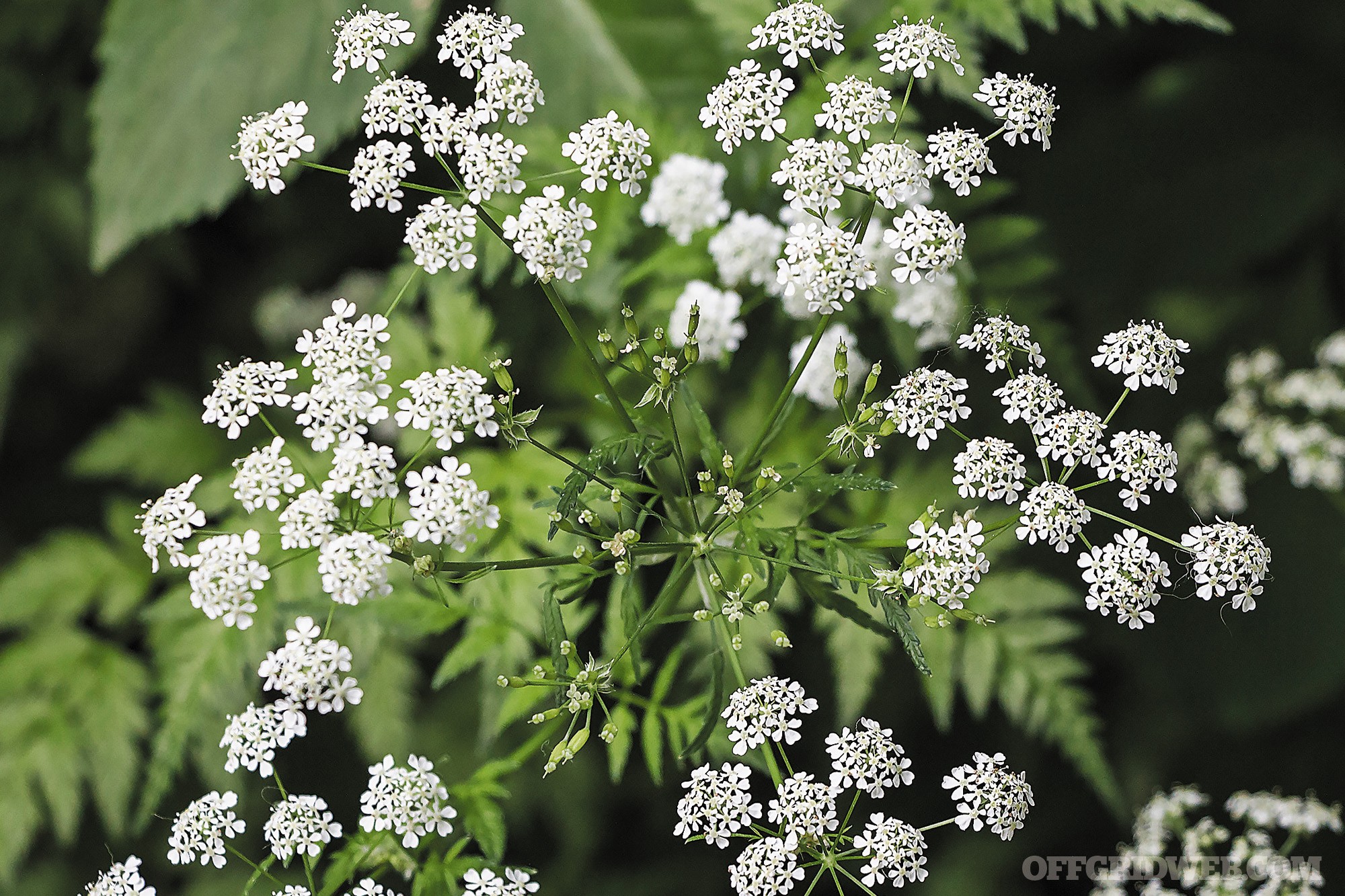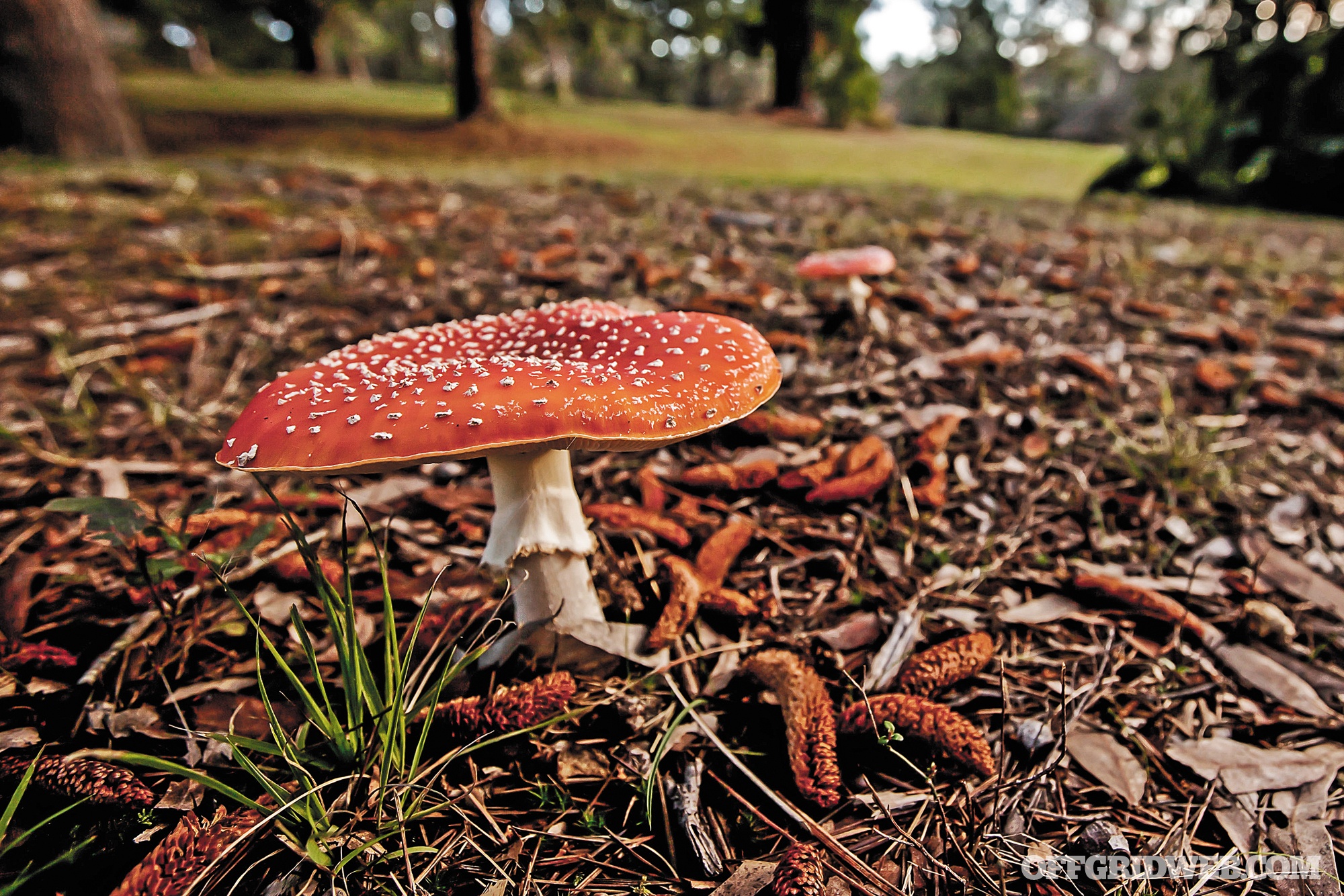RECOIL OFFGRID Survival Avoiding Poisonous Plants, Animals, and Spoiled Food After SHTF
In This Article
This article originally appeared in Issue 5 of our magazine.
Warning! This article is meant to be a quick overview and not a detailed guide on how to diagnose or treat poisonings or venomous bites. To be prepared for any emergency, we encourage you to enroll in a certified medical course or seek guidance from a licensed health provider.
When you’re fleeing a cataclysmic event, you’ll need to assess the threat then haul ass as quickly and as far away from it as possible. Once you’ve executed your bug-out plan and are in the midst of getting to safer territory, you’ll need to be prepared for whatever comes your way, from the big to the small. And by small we mean microscopic. The last thing you need is a mild stomach ache manifesting into a more serious problem.

Drinking contaminated water, eating innocuous-looking but toxin-filled plants, or being bitten by venomous animals can knock you on your ass — or, in extreme cases, be just as lethal as the bandits, wild fire, or chemical spill you’re trying to evade. If your local CVS is overrun with looters and your hospital has been locked down by the National Guard, you might not have any other option but to tough it out off-grid.
However, based on what you packed in your bug-out bag (BOB), these medical mishaps can be controlled long enough until you get to safer ground or find professional medical attention. Here’s a brief look at three types of potential poisonings you might encounter while bugging out, and what you can do to treat them.
Forget a regional calamity of epic proportions — we face potential food poisoning in our everyday lives. From an ill chef serving us at our favorite steakhouse to our failing to thoroughly wash vegetables before cooking, we can easily get sick from the foods we eat. And there’s a good chance you have or know someone who has experienced the symptoms, which include vomiting, diarrhea, and abdomen pains. This type of poisoning usually comes from bacteria, viruses, or parasites that are lying in wait in contaminated food or liquids.
Prevention is the best way to deal with this problem, so make sure all your food is cooked hot enough and all your liquids are treated or filtered to kill those nasty microbes. When you’re on the run, any raw meats should be cooked completely. If you’ve just pulled some rations from your cache or dropped a large deer in the backcountry, now is not the time to satisfy your gourmet craving for beef tataki or seared venison. If you’re forced to survive off plant life in the wilderness, make sure you give it a rinse with clean water or consider boiling it.
However, there comes a point when Montezuma gets his revenge, no matter how hard we fight back — and we’re left wincing and squatting behind some bushes every 20 yards. Luckily for us, our bodies are equipped with natural defenses. Our immune system often takes care of food poisoning within a few days.
Keep in mind, though, that you’ll probably be left dehydrated due to the excess vomiting and diarrhea. Therefore, constant uptake of fluids throughout and after sickness is essential. You’ll lose not only water, but also electrolytes, so consider carrying Gatorade or Powerade (in either drink or powder mix form) in your BOB. If you don’t have that kind of room to spare, consider packing dissolvable tablets that provide electrolytes. Also, it’s vital to maintain your energy by eating simple foods, such as rice, breads, or crackers, until you feel better. And as tempting as it might seem, put down that Twinkie and bottle of Wild Turkey. Help your stomach out by avoiding alcohol, caffeine, dairy products, and high-fat content food.
If you’re having a difficult time clearing this type of infection and symptoms have worsened to the point of having blood in your stool or vomit, seek professional help. If all the clinics are boarded up or you’re in the middle of nowhere, the alternative is to rest and stay hydrated to let your body and immunity focus on fighting off the critters that are causing the damage.

Poison hemlock looks pleasant, but is quite toxic. Ingesting even small quantities of its flowers, stems, or seeds can...
In a long-term survival situation, you might be facing starvation after depleting your BOB supplies. You must then rely on Mother Nature. However, when deciding to eat off the land, be aware that another type of ingested poison can also come from plants and fungi. This type is considered chemical poisoning, which can have severe — and even fatal — consequences. Lots of training and experience is required to decipher the large amounts and variety of plant life, so the best policy would be to eat only those that you’re certain are safe. (See “Nature’s Salad Bar” in Issue 8 of our sister publication RECOIL for more on edible plants.)
Most nonedible plants aren’t fatal but will cause various symptoms, including vomiting, nausea, headache, dizziness, and abdomen pain. These symptoms may take a few hours to manifest and by that time, there’s little you can do for the severe cases. It’s always best to keep the victim hydrated. Overly hydrating wouldn’t be a bad idea since it will help dilute the poison in the body and help clear the poison through their urine.
If you catch the poisoning early enough — hopefully within 30 minutes — then it’s ideal to induce vomiting as quickly as possible. The fastest and most common method of inducing vomiting is using our body’s gag reflex, gently sliding a finger or two down the victim’s throat. If that doesn’t work, play any song by John Mayer or Justin Bieber to induce rapid puking. Make sure the victim is facing forward and down to prevent any choking. As gross as it might be, vomiting will help clear the toxins from the stomach and reduce the amount absorbed by the body.

Amanita muscaria is a poisonous mushroom species that's relatively easy to identify. Others may not be so easy.
It’s important to restate that this option should be done only when ingestion of the toxic food is discovered early. Inducing vomiting at later stages of poisoning or when the poison involves chemical and corrosive poisons can have severe adverse effects. It may cause faster absorption of the toxins by the stomach, or it can lead to damage to the airways and lungs. Also, never induce vomiting on an unconscious victim because it can lead to choking complications.
Certain plants and mushrooms can be highly toxic, and once absorbed into the body, treatment can be very limited. Though highly uncommon in bugging-out situations, one possible treatment could be administering activated charcoal. Activated charcoal is highly porous, thus giving it a high absorption property. When used properly, it can help absorb the toxins inside your digestive system and prevent further intake of the toxin by your body.
Victims of severe poisoning may lose consciousness or go into seizures. If the victim is unconscious, check their vitals. Make sure they’re breathing correctly and blood circulation is normal. In cases of seizures, clear the area around the victim of any potential objects that can cause physical harm, such as chairs or rocks. Contrary to popular belief, don’t put anything inside the victim’s mouth during a seizure. Loosen any clothing around the victim’s neck to allow proper breathing, and don’t try to restrain the victim. Once the seizure is over, check the victim’s breathing and turn them to their side to help keep their air passage open. Try to keep the victim calm until they regain full consciousness. These severe cases of poisoning can’t be treated properly without professional medical help. Your main goal in these cases should be to stabilize the victim and then to seek medical help as soon as possible. Time can be the main factor in surviving a severe poisoning incident.
Sometimes poisoning can happen when you bite into food; sometimes it happens when food bites into you. Depending on your location, you could easily encounter a venomous snake while hunting in the backcountry. (Technically, venom isn’t poison, but both are toxic — see the sidebar below for more.) Though snakebites are highly preventable and fatalities from snakebites are rare, it’s still important to understand the complexities and complications.
If bitten, identify the type of snake to determine if it’s venomous or not. Simple bites from nonvenomous snakes should be cleaned with soap and water or any aseptic material to reduce the chances of infection. If the snake is venomous, then immediate action is required. Not all bites from a venomous snake involve injection of venom, and this type of dry bite should be cleaned appropriately. For venomous bites, the severity of the bite will mostly be determined by the amount of venom injected in the victim. Most species of venomous snakes in the United States have venom that is hemotoxic, and in these cases the venom damages only the tissue around the wound. A few species, however, have neurotoxic venom that attacks the victim’s nervous system. These attacks are fatal.
Unfortunately, there is no available field treatment to neutralize the venom, so your only hope might be getting the victim antivenin, usually available in hospitals and from trained medical professionals. Evacuate the victim using the most rapid form of transportation that doesn’t require extreme physical exertion. Have the victim walk calmly, if necessary. Immobilization of the limb that received the bite, usually with a splint, may help the venom from spreading. Don’t copy the movies or TV shows by sucking out the venom or cutting the site with a knife. These have shown to be non-effective and can delay the evacuation of the victim.
The venom can also cause an allergic immune reaction in the victim called anaphylaxis, which can also be fatal. Anaphylaxis requires treatment with an injection of epinephrine, so unless you have an epi-pen on hand, you need to get your ass to professional help.
Both poisons and venoms are harmful to organisms and can potentially be lethal. The difference is in the delivery. Poisons are toxins that are ingested, inhaled, or absorbed (think dart frog, blowfish, or oleander). On the other hand, venoms are toxic when injected under the skin into underlying tissue (picture king cobras, black widow spiders, or box jellyfish). Venoms, interestingly enough, are usually not toxic if swallowed. But why tempt fate? Avoid drinking venom!
When you’re running for the hills, don’t let the runs get the better of you. Poisoning by food or plants is preventable using common sense and doing a bit of research before disaster strikes. Prep your gear so you have tools and water to properly prepare meat and vegetables. Study what types of plants are edible in your region or find a survival expert who can teach you, then go out and practice making your own organic salad in the wilderness.
Venomous animal attacks can also be avoided by staying aware and cautious. This includes doing research on predators that might reside along your evacuation route. But if you’ve been bit by a venomous snake, you’ll need to cure it (with antivenin) ‘cause you’re already running out of time. When bugging out, be aware of not only the physical barriers that might impede your path to safety, but also the biological poisons that can prove deadly if not properly treated.
 STAY SAFE: Download a Free copy of the OFFGRID Outbreak Issue
STAY SAFE: Download a Free copy of the OFFGRID Outbreak Issue
No Comments